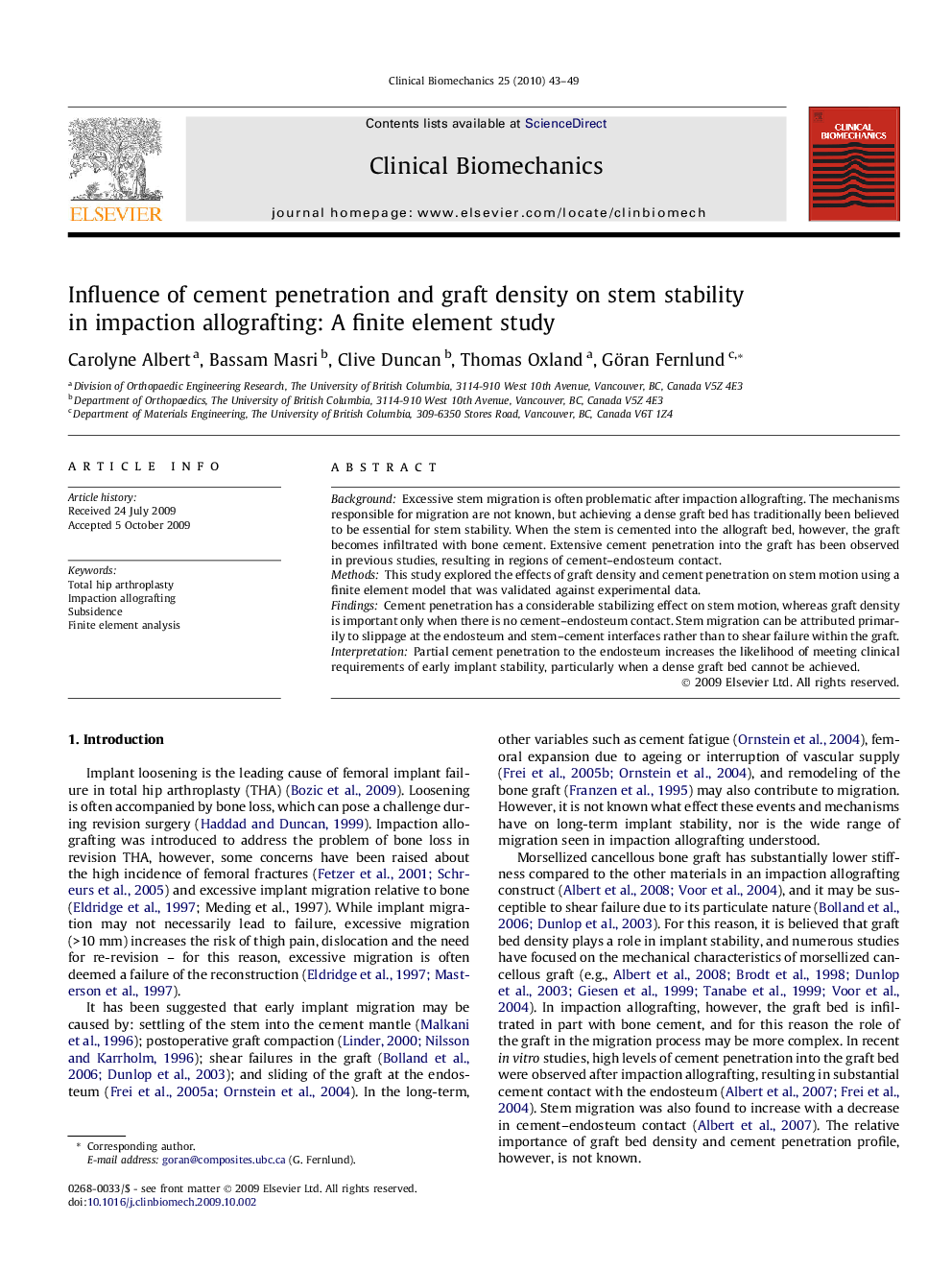| Article ID | Journal | Published Year | Pages | File Type |
|---|---|---|---|---|
| 4051148 | Clinical Biomechanics | 2010 | 7 Pages |
BackgroundExcessive stem migration is often problematic after impaction allografting. The mechanisms responsible for migration are not known, but achieving a dense graft bed has traditionally been believed to be essential for stem stability. When the stem is cemented into the allograft bed, however, the graft becomes infiltrated with bone cement. Extensive cement penetration into the graft has been observed in previous studies, resulting in regions of cement–endosteum contact.MethodsThis study explored the effects of graft density and cement penetration on stem motion using a finite element model that was validated against experimental data.FindingsCement penetration has a considerable stabilizing effect on stem motion, whereas graft density is important only when there is no cement–endosteum contact. Stem migration can be attributed primarily to slippage at the endosteum and stem–cement interfaces rather than to shear failure within the graft.InterpretationPartial cement penetration to the endosteum increases the likelihood of meeting clinical requirements of early implant stability, particularly when a dense graft bed cannot be achieved.
